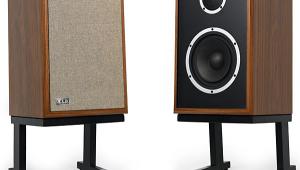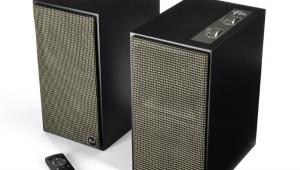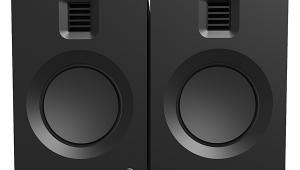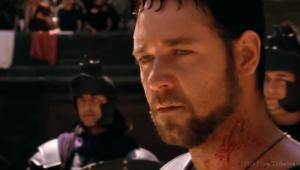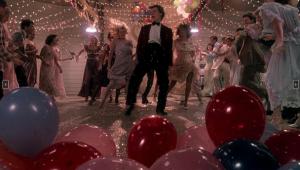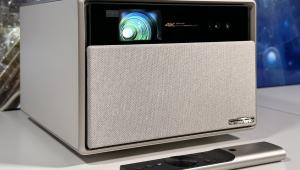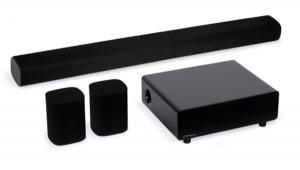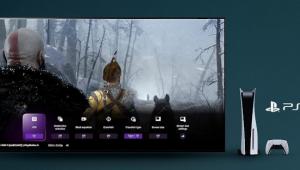Definitive Technology Demand Series D11 Speaker System Review Page 2
Associated equipment included a Denon AVR-X7200W receiver, Oppo BDP-83SE universal disc player, Micro Seiki BL-51 turntable, Shure M97xE cartridge, and Denon PRAS10 serving as phono preamp. All movie demos were on Blu-ray Disc with DTS-HD Master Audio soundtracks.
Neutral Feel
While our measurements are the ultimate arbiter of technical rectitude, I did find that the Demand monitors and center had a neutral feel—I never observed any part of the spectrum being emphasized, downplayed, or sweetened. The midrange and presence region were open and revealing but not etched or clinical. No veil, but still with a high comfort level. Not surprisingly, I loved having two subs in the system—an extra sub can help provide more even coverage throughout the room as well as more total output. Bass from the 8-inch sub built into the center and the 9-inch outboard sub sum-med well, helped by the fact that they were placed fairly close together. This arrangement was unique in my experience, and I liked it immediately. It also excited my room’s standing wave less than I’d expected, so I pushed up my initially conservative meter-determined LFE levels to fatten rhythm sections, with few ill effects. My Denon receiver helped by allowing me to set the level of each sub separately but offering an option that adjusted them in lockstep, which came in handy later.
Logan has a busy and dynamically challenging soundtrack with Wolverine’s metal-claw brawls, angry cars ripping up a dirt yard, routine ballistics, and the distinctive all-channel droning mayhem that accompanied Charles Xavier’s seizures. Yet I never felt the need to turn down the volume, which was all the more remarkable in a system that avoids sugarcoating. My fears of enthusiastic subwoofer levels causing male vocals in the center channel to become overly thick and boomy were unfounded as well.

Aftermath casts Arnold Schwarzenegger as a plane-crash mourner. Though the crash is not directly depicted, the soundtrack does hint at jet noise in bass-rich swirls that signal his psychological stress. The two subs conveyed them with admirable restraint and no noticeable excitation of the room’s standing wave. While my reference sub (unused in this review) is a great performer, I felt that this system’s dual subs endowed the bass response with an evenness of coverage and subtlety my one-sub reference system can’t match.
Alien: Covenant challenged the system with a cornucopia of timbres and textures. The opening emergency in space—roaring, whooshing, buzzing, exploding—showed the system’s ability to deliver a lot of information, even at challenging volumes, while also juggling a fun score that veered between awed mysticism and panic. Then there were the extendedexplosion of a landing craft, ships in turbulence, and a water landing, not to mention good old-fashioned splattering rain. As a general indication of how good the speakers were at suspending disbelief, I practically jumped out of my skin when something fluttered into my field of vision during a space-creature attack. It was a loose feather that escaped from a sofa pillow.
High-Res Helps
King Crimson’s new 27-disc box set Sailors’ Tales includes Blu-ray Discs with Steven Wilson’s 2009 and 2010 mixes of In the Wake of Poseidon, Lizard, and Islands, all in both 5.1 and stereo, with 96/24 uncompressed PCM and lossless DTS-HD Master Audio soundtracks. Following their earlier release on DVD-Audio, Lizard was generally deemed the chief beneficiary, with the 5.1-channel mix finally teasing the knots out of the album’s tangled textures. But Islands was the one that grabbed my attention with its masterful ebb and flow of rock instrumentation and odd pastoral elements like Harry Miller’s string bass, Mark Charig’s cornet, and Paulina Lucas’s wordless soprano. The reliable timbres of the Demand monitors made me realize how much the new mixes benefit from being released in a highresolution medium. The speakers also aced the dynamic swings of Poseidon, using the calm “Peace—
A Beginning” and “Cadence and Cascade” to bookend the all-out sonic assault of “Pictures of a City” and the declaiming mellotrons of the title track. As with the more aggressive movie soundtracks, a high comfort level held it all together.
I challenged the Demand D11 monitors to make distinctions between two vintage vinyl releases of Debussy’s La Mer: with Daniel Barenboim leading the Orchestre de Paris (Deutsche Grammophon, 1978) and with Leopold Stokowski leading the London Symphony Orchestra (London Phase 4, 1970). Both were treble-forward, and I expect no less of two closed-miked multi-track orchestral recordings from that period. Phase 4, in particular, has a reputation for being too “hot”—yet the D11’s account of the Stokowski was a tad warmer and a lot smoother, with a more full-bodied string sound to fill out its well-defined edges, more ambience, more magic, and more virtuosity than I expected. (But I would say that, being a Phase 4 addict. Stokowski’s own orchestration of Mussorgsky’s Pictures at an Exhibition was the first classical LP I ever bought. No one, including Karajan, could beat it.)
Angel Delight (U.K. LP) is the product of a four-man Fairport Convention. Though shorn of its beloved songwriters, Sandy Denny and Richard Thompson, it held onto its scrappy rhythm section as the late Dave Swarbrick led it deeper into more English-tradition-rooted folk-rock territory. Newly elevated lead vocalists Swarbrick and Simon Nicol got spotlighted in the mix, and the D11 gave them due prominence alongside Swarb’s violin and mandolin. Fiddling around (sorry) with the SuperCube’s EQ settings, I liked what the low-bass-centric setting did overall. I expected the settings that emphasized midbass (with or without low-bass emphasis) to interact unfavorably with my room’s standing wave, but they were surprisingly listenable. Only the outputmaxing setting seemed crude by calling attention to the sub. In the best of all possible worlds, I’d prefer measurement-based room correction in a sub, but the SuperCube probably would prosper in more situations than a sub that allows no EQ tweaks at all (and that’s most of them).
Conclusion
Definitive Technology’s Demand Series is a brilliantly unorthodox design statement that makes good on its rhetoric and aspirations with deeply satisfying sound. And the CS9060 center’s active sub mated with the Demands here might alone be worth the investment—it is an excellent way to get a second sub into your system. However, that train of thought would derail were it not for the overall quality of the complementary D11 and D7. By sheer coincidence, I still had the system installed over last year’s Thanksgiving weekend and I gave thanks for it every day.
- Log in or register to post comments

